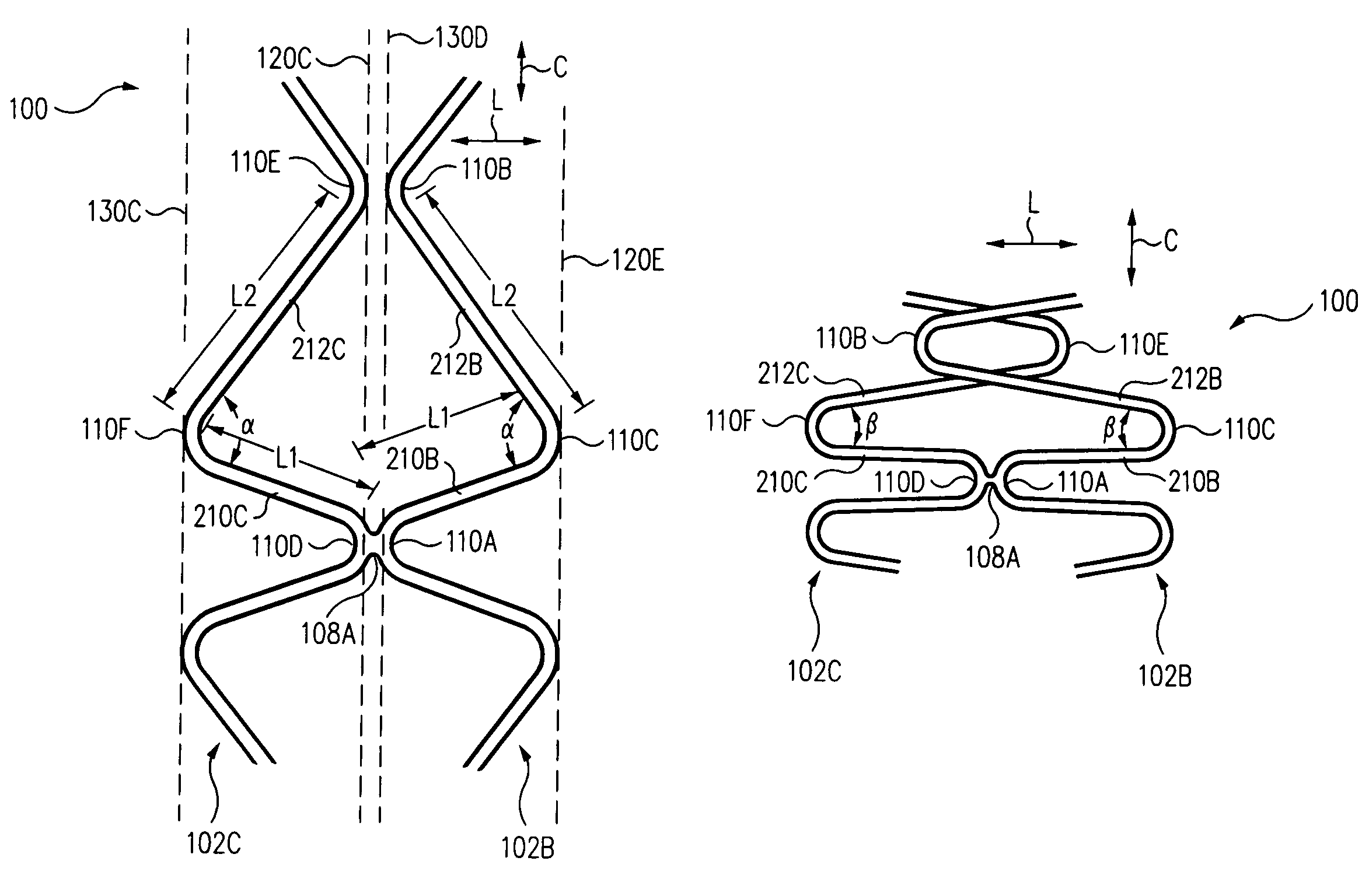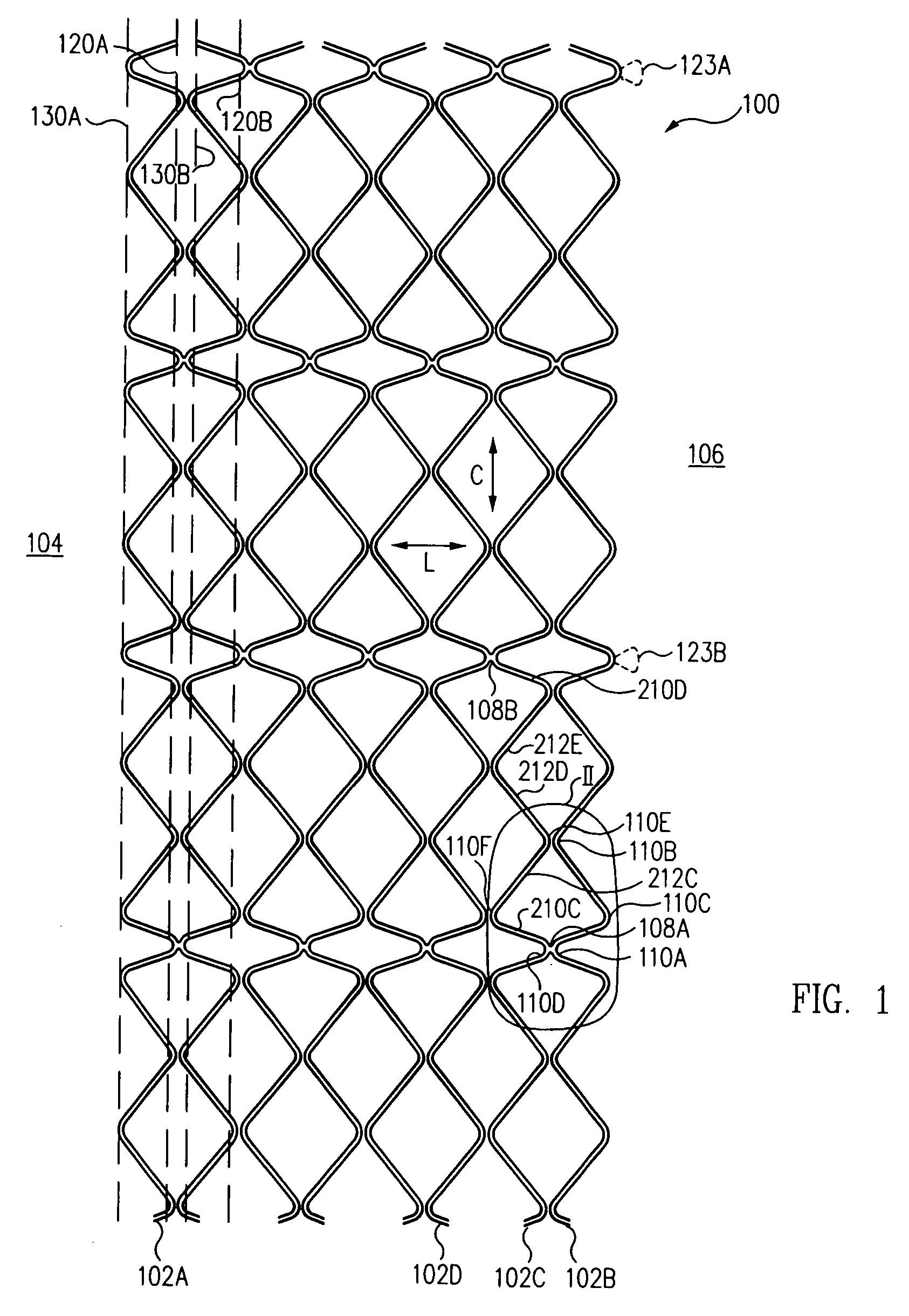Flexible resheathable stent design
a flexible, stent technology, applied in the field of stents, can solve the problems of human anatomy tortuous, recapturable stents subject to significant bending and flexing, and conventional recapturable stents have practical limits to the allowed amount of bending
- Summary
- Abstract
- Description
- Claims
- Application Information
AI Technical Summary
Benefits of technology
Problems solved by technology
Method used
Image
Examples
Embodiment Construction
[0027]FIG. 1 is a laid flat approximately half circumference plan view of a self-expanding stent 100 in an expanded configuration in one embodiment according to the present invention. Stent 100 includes a plurality of segments, sometimes called capture segments, including capture segments 102A, B, C, D, coupled to one another. Although eight capture segments are illustrated in FIG. 1, stent 100 can be formed with more or less than eight capture segments 102.
[0028]Illustratively, stent 100 is integral, i.e., is a single piece and not a plurality of separate pieces connected together. For example, stent 100 is formed by laser cutting a tubular piece of material. However, in an example, capture segments could be separate pieces, which are connected together, e.g., by welding.
[0029]Stent 100 includes a distal, e.g., first, end 104 and a proximal, e.g., second, end 106. Stent 100 extends longitudinally between distal end 104 and proximal end 106 along a longitudinal axis L, i.e., in the ...
PUM
 Login to View More
Login to View More Abstract
Description
Claims
Application Information
 Login to View More
Login to View More - R&D
- Intellectual Property
- Life Sciences
- Materials
- Tech Scout
- Unparalleled Data Quality
- Higher Quality Content
- 60% Fewer Hallucinations
Browse by: Latest US Patents, China's latest patents, Technical Efficacy Thesaurus, Application Domain, Technology Topic, Popular Technical Reports.
© 2025 PatSnap. All rights reserved.Legal|Privacy policy|Modern Slavery Act Transparency Statement|Sitemap|About US| Contact US: help@patsnap.com



